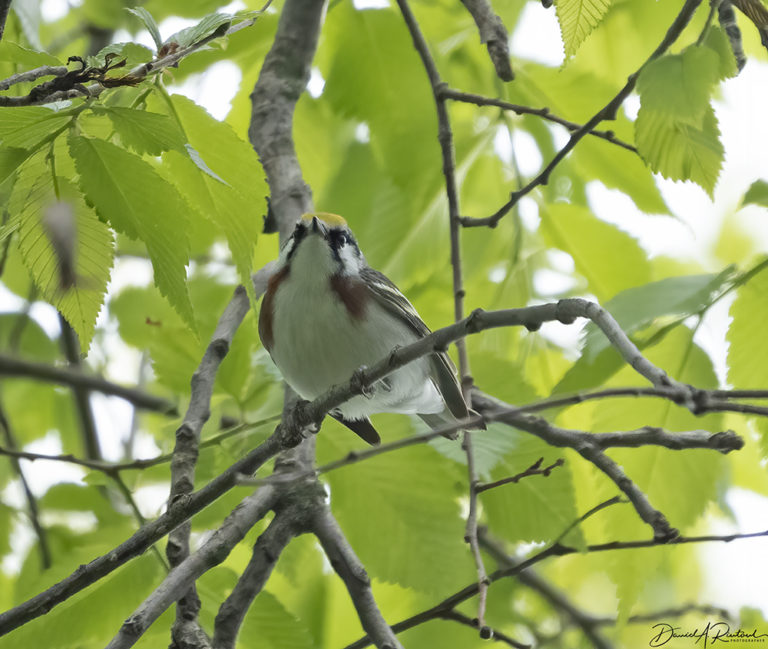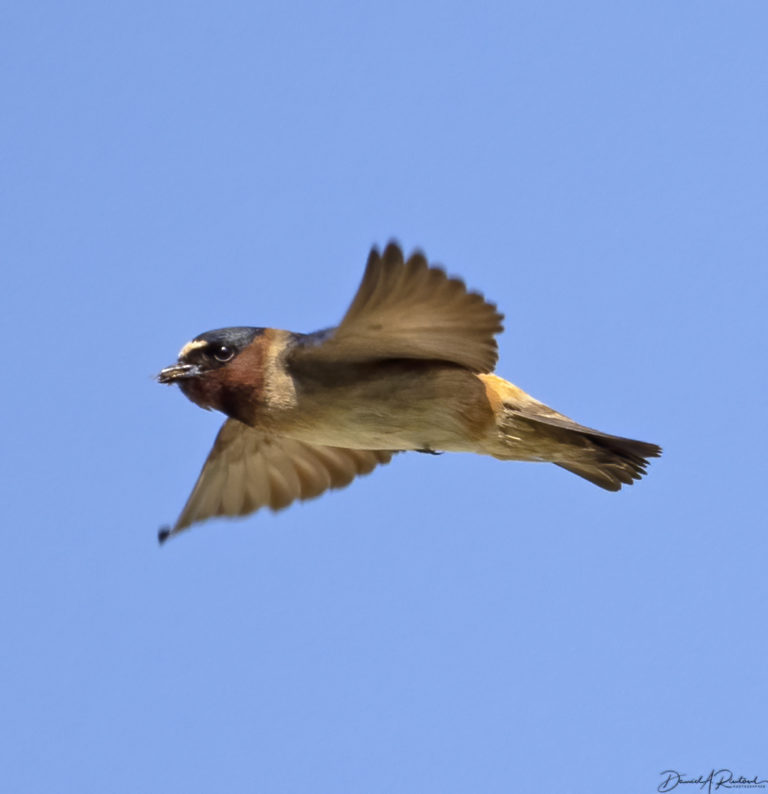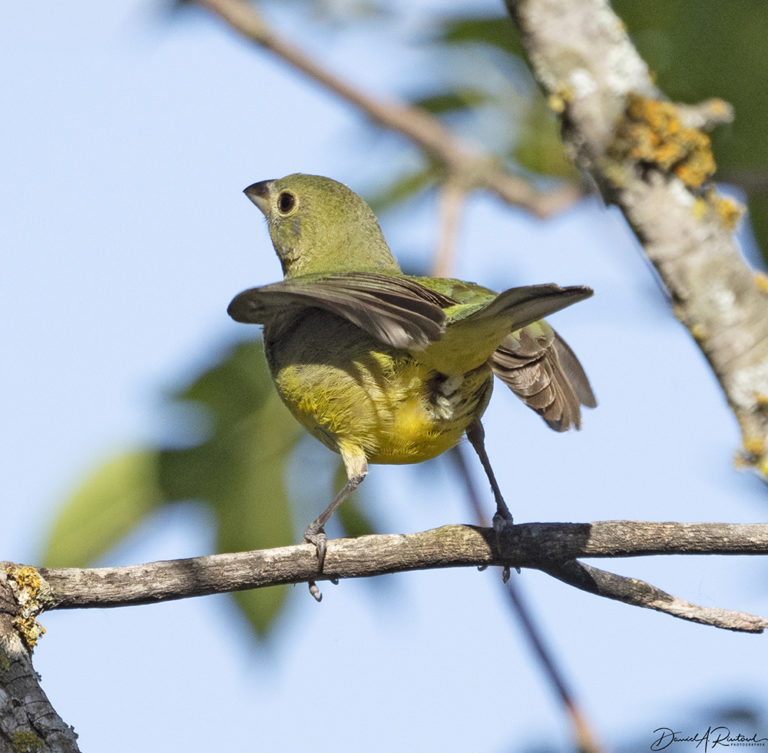On the Road is a weekday feature spotlighting reader photo submissions.
From the exotic to the familiar, whether you’re traveling or in your own backyard, we would love to see the world through your eyes.
I kind of hate to see this spring in flyover country series end! Maybe Albatrossity will tell us in the comments just what he has up his sleeve next!
Albatrossity
Spring was winding down in late May; migrants were becoming very rare and local breeding birds were building nests, laying eggs, or even feeding babies. So this is the last installment of Spring in Flyover Country 2021.

One of the late migrant warblers – a Chestnut-sided Warbler (Setophaga pennsylvanica). This is a very common warbler in the eastern US and across southern Canada. We only see them in migration here, although there are a couple of disjunct breeding populations in the Rocky Mountains and in the Ozarks. But if you really want to see numbers of these striking birds, find some brushy second-growth woods or an old orchard in New England.

Another rare and local breeding bird in my part of the country is the Henslow’s Sparrow (Centronyx henslowii). The field guides all use terms like uncommon, local, declining, etc. to describe the status of this species. They are rare but regular here in tall-grass prairies that were not burned this spring. Their hiccup-like song is the best way to find them, since they are very small and like to hide among the old grass stems. Here’s one that actually perched up in the daylight to sing.

Cliff Swallows (Petrochelidon pyrrhonota) were busily hauling beakfuls of mud to their nest sites. I have always been thankful that I do not have to build my own house, annually, with my mouth.

Some of our resident birds were still in the courtship mode. This female Painted Bunting (Passerina ciris) was responding to the singing of a very handsome male in the next shrub. I think that this is called a solicitation.

A male Scissor-tailed Flycatcher (Tyrannus forficatus) in flight. I know I’ve had lots of pictures of this species in past OTR posts, but I do believe that this male has just about the longest and most impressive tail feathers that I have ever seen!

A Downy Woodpecker (Dryobates pubescens) dad teaching one of the kids about values of the high-fat diet available at our suet feeder.

In late May, after Elizabeth turned in her semester grades, we headed west for a brief visit with an old dear friend in western Colorado. It was our first road trip since March 2020, our first time in a restaurant since March 2020, and an interesting trip for those reasons alone. But we also had some good walkabouts and saw some good birds. This male Gambel’s Quail (Callipepla gambelii) in Eric’s back yard was watching over his mate and a brood of 5-6 youngsters. He seems very proud!

Another backyard denizen and a bird we don’t see much in Kansas, a male Black-chinned Hummingbird (Archilochus alexandri). This is the western congeneric of our resident hummer here, the Ruby-throated. Every place needs more hummingbirds!

Western CO and most of UT are in a very severe drought again this year. So when you find water you find birds. This Violet-green Swallow (Tachycineta thalassina) and a lot of his buddies were foraging over the Colorado River channel. I shot way too many pictures to get a few decent in-flight shots of these guys, but they are a very handsome bird!

We were also graced by the presence of this handsome male Black-headed Grosbeak (Pheucticus melanocephalus). This species is the western equivalent of the familiar Rose-breasted Grosbeak of eastern US woodlands, occurring mostly west of the 100th meridian or so. Like their eastern cousins, they are large and flashy.

sab
Your photos are amazing.
55 years ago I had to make a bird model in third grade. It was a rose-breasted grosbeak. I thought the bird was gorgeous so I made it very large. I was shocked 50 years later when I saw one in real life, and it was gorgeous but just a normal size bird.
5:30 am here and the robins and sparrows are just blasting away, even though not yet light out.
sab
@sab: Pileated woodpecker was another thing entirely. Every bit as large as it ought to be.
eclare
Wow, that is an impressive tail on the Scissor tailed Flycatcher!
JanieM
If you had asked me an hour ago, I would have guessed that cliff swallows build their nests out of regurgitated pellets of some sort. I’m amazed that they get near the ground long enough to gather mud.
They nest on my house and barn. I happened to be outside one day in May of 1999 when they came back from their winter away. A group of them arrived at a spot in the air next to where their nests used to be, on a house that was in the process of being torn down. They would chatter, flit away for a bit, then come back and hover and chatter some more, as if they couldn’t quite believe what they were seeing.
debbie
A neighbor is growing sunflowers by her back door. There’s a yellow bird who’s decided they’re his and his alone. He flies diagonally between the flowers and the roof just past my window, so I see passing yellow streaks all day long. He’s either a warbler or a goldfinch, but I can’t catch sight of his head to figure out which.
mvr
Thanks for these. While Spring in Flyover Country may be over, there is always summer for followups.
I was just watching two sets of woodpecker parents introduce their children to our suet and nut feeders outside the window where I sit. One set was the downy woodpeckers like in your photo and the other was a couple of red breasted woodpeckers. Both were in our tree and on our feeders at the same time. In fact the latter are still there. Or were until I typed that.
Thanks again for a nice series!
stinger
I
demandearnestly hope for a Summer in Flyover Country series, and a Fall in Flyover Country series, and a Winter….Albatrossity, you bring out the personality of birds as well as their colors, conformation, and athleticism. Some of them I can practically hear singing!
I have barn swallows that nest under the eaves of my barns and outbuildings, and one year under my porch. By the time I noticed what they were up to, they were far enough along that I couldn’t bring myself to hose the nest off the top of my windows.
When I go jogging, I cross a bridge where cliff swallows dive bomb me from nest-building through egg-laying and baby birb-rearing seasons. The red-wing blackbirds do the same from the ditches.
JoyceCB
Thank-you Albatrossity, these are wonderful. This eastern birder has driven many, many kilometers to see the occaisional Scissor-tailed Flycatcher that has wandered into Southern Ontario!
Albatrossity
There will definitely be some Summer in Flyover Country posts; travel will still be sporadic for a while! And since I go out here every day that I can, shooting bird pictures and other images, I should be able to manage a weekly batch.
There are a couple of other options that I am currently mulling around in my head; I may consult with Watergirl about those before proceeding. Stay tuned! And thanks for all the kind words; your support is much appreciated.
frosty
I first saw violet-green swallows on last year’s road trip. We had a campsite in Fool Hollow State Park in Arizona, and someone had put up a birdhouse right next to our site. All I had to do was sit outside the camper with my morning coffee to see them flying back and forth. They’re one of my favorite birds and they were all over the west on our trip this year.
arrieve
First week of my summer vacation after turning in my last paper Saturday, and I get to start off with some of Albatrossity’s magnificent birds. Life seems very good at the moment.
Princess Leia
Late to comment but I want to echo Stinger- your photos bring these birds to life. I live in the city and am saddened daily about the loss of morning bird song, and the diminishing of local habitats. Your pictures lift my heart – thank you.
J R in WV
I too really admire the Monday morning birb photo sets~!!~ Great photos and commentary of beautiful birds. Have never seen a scissor-tailed bird, amazing feathers on that bad boy !
Keep up the great work, thanks so much for sharing these wonderful pictures.
SkyBluePink
Thank you for another educational and beautiful Wonderful World of Birds!
A woman from anywhere (formerly Mohagan)
Thank you! These pictures (as usual) are fabulous. I particularly like the VG Swallow. What a nice start to the week. At my house, the hummingbird feeder has 5-6 regular visitors (Anna’s I think), and for the past few weeks, has needed to be refilled every 2-3 days. The CA quail have been successful in raising babies, but the turkeys have disappeared. Quite mysterious
Where we used to live up in the hills, we had Red-Headed Grosbeaks breed by our house and every year would introduce their babies to the black oil sunflower seed feeder. The bird book said they were shy, but after they got used to us, they weren’t!